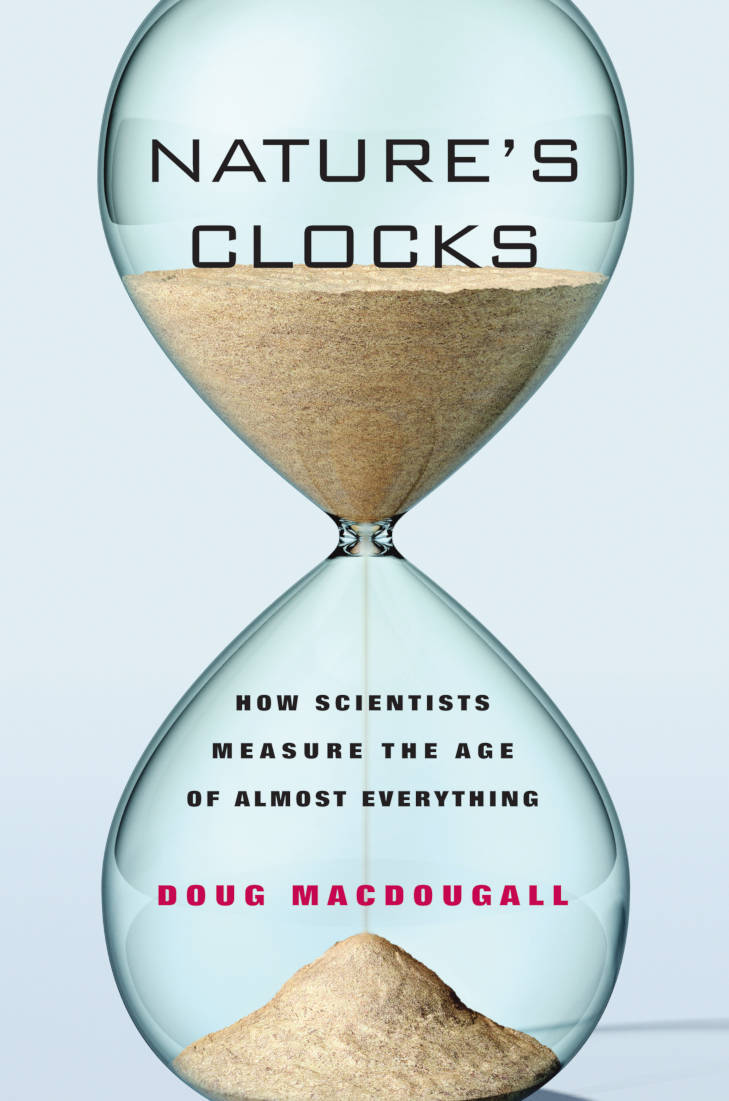…a delightful study of how scientists figured out analytical techniques that revealed the history of the earth.
New Scientist
This is a book about time – specifically, geological time – and how it is measured. As a reviewer for the Washington Post put it, ‘For time-conscious readers, Nature’s Clocks provides satisfaction beyond measure.’ I won’t argue with that.
Time can be an elusive concept. We all know what it is, or think we do, and we never have enough of it. But can you define it? In the fourth century Saint Augustine described the conundrum: “If nobody asks me, I know what time is, but if I am asked, then I am at a loss what to say.” But that hasn’t stopped people, from time immemorial(!), from searching for ways to measure time. Daylight and darkness, cycles of the moon, the sun’s position in the sky, the changing of the seasons – all have been used to chart up the passage of time. Today we use atomic clocks that measure the passage of time so precisely that they wouldn’t loose or gain more than a second over the age of the universe. But how do scientists measure geological time? How do we know when, exactly, the dinosaurs roamed the earth, or when the Himalayas formed? Those are the kinds of questions tackled in this book.
Because I’ve always believed that historical context is important for understanding science, I’ve included descriptions of the sometimes long and arduous journeys that scientists embarked on to reach their goal of measuring geological time: Ernest Rutherford discovering that the decay of radioactive uranium could lead to a method to date rocks; Bill Libby and his colleagues ‘discovering’ carbon dating; Clair Patterson measuring the age of the earth. These stories, I hope, add some human interest and help to illustrate how science progresses.
Buy on Amazon
UK Amazon author’s page U.S. Amazon author’s page
